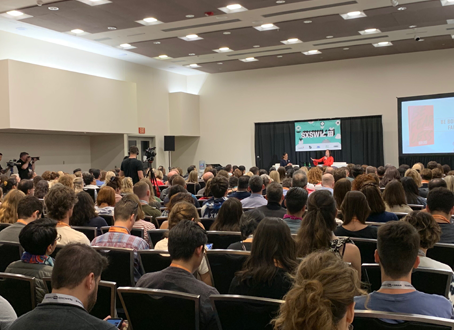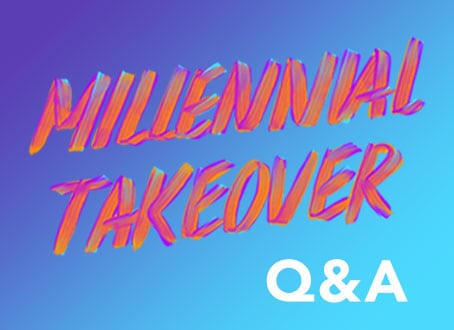This post was written by Derrick Feldmann on behalf of the Case Foundation:
When I started my graduate studies, the word “philanthropy” appeared often. Through textbooks I learned the traditional definition of philanthropy: Love of humankind in the form of time, talent and treasure.
This high-level concept has seen the world through decades of philanthropic actions, as people and corporations donate money and volunteer time through a desire to ‘do good.’ We call these actions philanthropy and they usually generate good feelings, great PR and tax deductions.
Over the past decade, as I’ve consulted philanthropic organizations and foundations, I’ve seen the philanthropy landscape grow and change, cultivated largely by the generation of consumers and givers we call Millennials. We’ve spent the past few years researching Millennials in a project called the Millennial Impact, a comprehensive look at how this generation (ages 20 to 30) connects, gets involved with and supports causes.
Through our research, we learned that Millennials exercise philanthropy in the same ways as other generations, though their motivations may be different. The top three factors that motivate Millennials to get involved in a cause are passion, meeting people and enhancing their expertise. They do indeed practice giving their time, talent and treasure, but Millennials want to lend their knowledge, expertise and time to help nonprofits. Actually, 48 percent of Millennials say they prefer using their background experience or skills to volunteer for a nonprofit. And this generation gives. Our research shows that 83 percent of Millennials made some form of financial gift to an organization in 2012.
If the traditional definition of philanthropy still holds true today, are there additional items beyond time, talent and treasure that measure philanthropic action?
There are some obvious benefits to this definition that attribute to its survival. For example, it’s a nice bucket that we might categorically drop things into. In some ways, everything a company or individual does to benefit a cause could fit into this definition and slide under at least one of the time, talent or treasure criteria.
Why not be more specific? The traditional definition doesn’t leave room for new actions that Millennials view as philanthropy. As technology and the way we conduct business evolve, so too does our means of giving financially–as well as the way we donate our non-financial assets like time and relationships.
It is the next generation of givers and volunteers, the Millennials, who are ushering in this new age of philanthropy. Because of this, we need to think about a new definition, or rather an appendage to the existing definition of philanthropy, which reflects new criteria and includes the following:
- Time – Volunteering hours, days of service, etc.
- Talent – Using one’s expertise to benefit a cause
- Treasure – Financial contributions (big or small) donated for charitable work
- Voice – Time spent advocating and educating others about your cause
- Network – Leveraging personal and professional relationships or online followings to benefit a cause
The first three are self-explanatory. Time, talent and treasure stem from the traditional facets of philanthropy and still carry tremendous potential for making an impact. The latter two criteria, voice and network, warrant a bit more explanation. Voice and network are add-ons to the traditional definition of philanthropy, yet they are extremely important to your Millennial employees and constituents. The power of voice remains vital and Millennials admire giving or donating one’s voice as a tangible form of philanthropy. Voice involves aligning yourself with a cause or issue and advocating as an unofficial (or official) spokesperson. You’re literally educating others about a cause. A person who gives their voice might still give their skill, time and money, but they go beyond these endeavors to get others involved.
A few months ago, I met a young woman who is a strong advocate for ALS research. ALS, also known as Lou Gehrig’s Disease, affected her father and she’s become a passionate voice for causes like the ALS Association, which seeks a cure and supports ALS research. She brought this passion to work, encouraging her co-workers to support the ALS Association. Her co-workers rallied together and now participate in the Walk to Defeat ALS® every year as a company event. She’s a perfect example of how Millennials use voice and advocacy as a philanthropic means to support a cause.
Network differs from voice. Network involves capitalizing on your vast bank of personal or professional relationships to expose other people to a cause. There are obvious similarities to voice, but offering your network to a cause means advocating on a much larger scale, and your message has potential to spread to thousands of people. Think of your own network. How many followers do you have on Twitter, Facebook or LinkedIn? For non-techy individuals, think about the number of contacts in your address book. Millennials understand the potential social networks have for disseminating a simple cause message or a link to a website. Sharing your network with a cause is a limitless philanthropic action that can go unrecognized.
Last year TIME Magazine created a post that allowed users to estimate how much their Twitter feed is actually worth. TIME created a formula that measures the “value” of your individual Twitter feed. They take your number of Tweets divided by the number of days you’ve been on Twitter, multiplied by your amount of followers, multiplied by 25% (the number of followers actually paying attention), and then multiplied by 12.45 cents (what each “eyeball” is worth). That final number is supposed to represent the value of your Twitter account.
According to this formula, my Twitter account (@derrickfeldmann) is worth $287.
It might seem like a significant bonus until you consider Taylor Swift’s Twitter account (@TaylorSwift13) is technically worth about $1,330,503.
The point: Your individual social network has value. When someone like Swift, with close to 39 million followers, Tweets about a cause, it influences and resonates with some individuals. We don’t all have Swift’s following, but you shouldn’t underestimate the power of your network. It exists online, in social networks, in your relationships and throughout your company. When you give your network to a cause, you’re being philanthropic.
Some may scoff at network as a shallow form of philanthropy, but for many cause advocates it’s the only the only way they can help a cause. Considering 75 percent of Millennials say they share content on social media, network carries incredible influence and potential if you’re able to recognize it. Most organizations already use network on a less digital scale. You strategically form your advisory board to appoint community and business leaders who are well connected. You do this so that they will have a more vested interest in the organization and their network can benefit your cause. Network is philanthropy in a way that Millennials respect and use.
Millennials treat all five as equals – time, talent, treasure, voice and network. They’re all available to give, and when given out of “love for humankind,” as the traditional definition suggests, make philanthropy something the world, our communities and our neighbors need now more than ever. Look to the next generation of philanthropists to lead the way.
Derrick Feldmann is the President of Achieve – the creative research agency behind The Millennial Impact Project to understand how Millennials connect, involve, and give to causes. He is the coauthor of Cause for Change: The Why and How of Nonprofit Millennial Engagement published by Jossey Bass, a Wiley Imprint.




